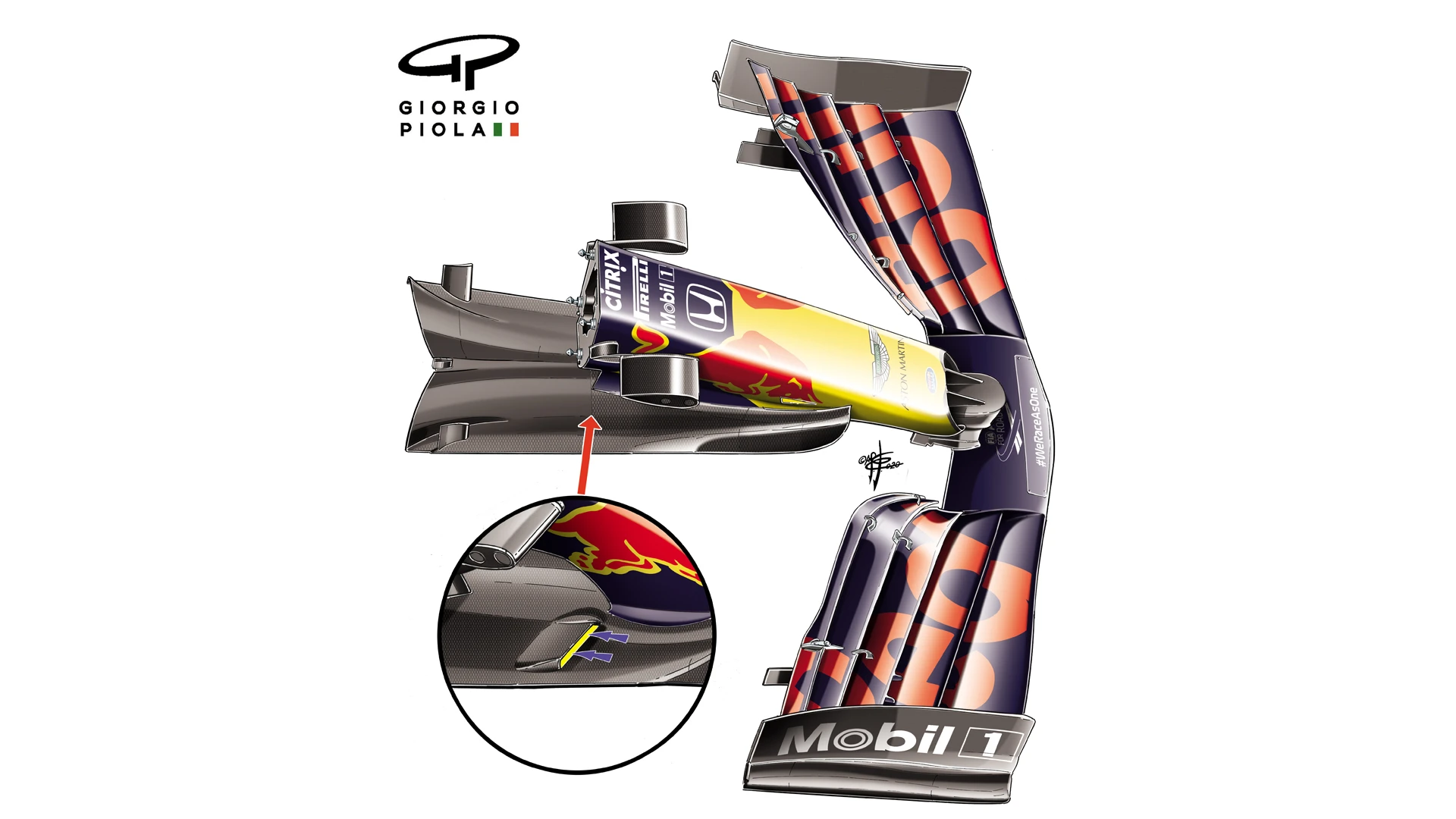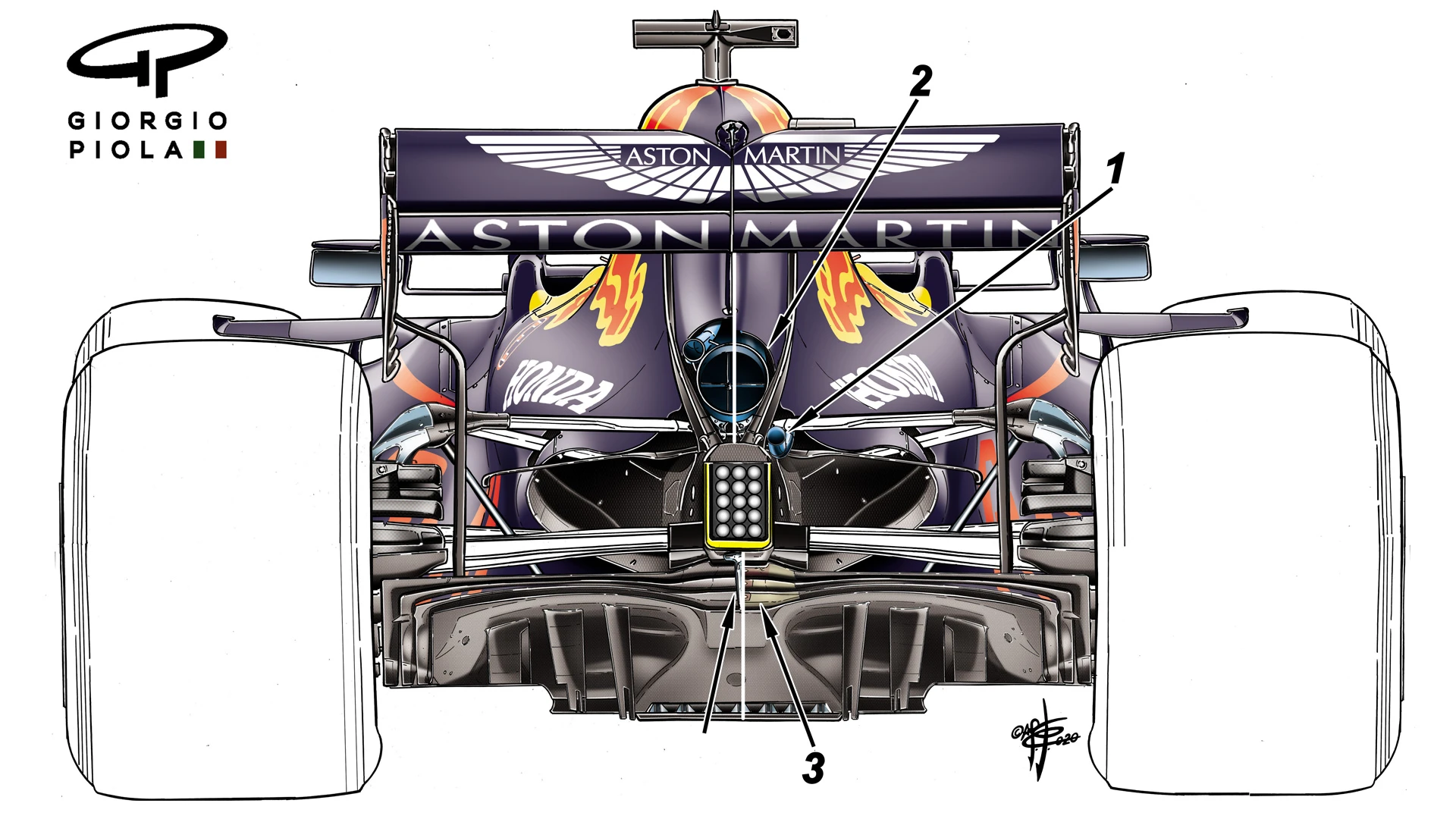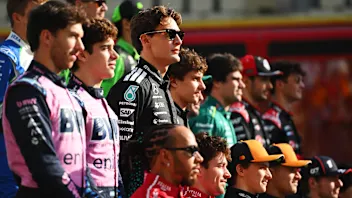The Istanbul updates that show Red Bull are still trying to unlock the RB16’s full potential


The season maybe almost over, and the constuctors' title very much already over, but that hasn't stopped Red Bull from trying to coax more performance out of their car with new upgrades at the Turkish Grand Prix, as Mark Hughes explains, with technical drawings from Giorgio Piola.
Two small detail changes on the Red Bull at Istanbul suggest that even at this late stage of the season, the team is still working flat out in trying to unlock the full potential of its highly sophisticated, but sometimes difficult, RB16 design.
The nose cape – the wedge-shaped component that slots beneath the front of the nose to manipulate the air vortices coming off the front wing to speed up the airflow to the underfloor – was a device originally devised by Mercedes. It has become increasingly fashionable, and this year’s RB16 was the first Red Bull model to encompass it.
READ MORE: How much have Red Bull, Racing Point and Ferrari closed the gap to Mercedes in 2020?
It can be a powerful device, but Red Bull have clearly experienced difficulty in getting consistency. The car, particularly in its early season form, could be very quick through slow corners, but the grip seemed to be variable and there were many early season spins from Max Verstappen and Alex Albon as they tried to cope with what appeared to be a sudden loss of rear grip.
The underfloor performance did not seem to be consistent at low speeds, when the airflow is at its most stall-prone through the greater steering angles and increased rear ride height – especially on such a high-rake car.
READ MORE: The RB16 upgrades allowing Red Bull to close the gap to Mercedes
Red Bull have evidently been working on making that airflow to the underbody generated by the various vortices off the front wing, cape and barge board vanes more robust and less stall-prone at low speeds. At Istanbul they introduced a cape with twin slots, one either side of the nose (below).

While these slots will deprive the cape of some of its power in turning around the airflow towards the barge board vanes, they will release some of that airflow direct to the main underfloor (which begins below the cockpit).
In this way, the flow might be able to stay attached at slower car speeds than before, without the sudden stalls that may have been causing the inconsistent rear grip.
Another small detail change at the rear of the car – around the exhaust – may well be connected with the revised underfloor airflow created by the cape slots. In the drawing below, the left-hand side shows the pre-Istanbul arrangement, the right-hand side the new arrangement introduced for Turkey.

It can be seen that the position of the wastegate exhausts (1) has changed from above the main exhaust pipe to below. They are now sited actually below the upper suspension wishbone. The wastegates within the turbo control the speed at which the turbine turns. They are not in full-time operation but, just like the main exhaust pipe itself, they do influence the aerodynamics.
Aerodynamicists are trying to connect the up-washed flow exiting the diffuser to that flowing on the underside of the rear wing. The more flow they can get to that wing, the greater the pressure difference between the wing’s upper and lower surfaces, and therefore the greater the downforce it produces.
Jolyon Palmer's Analysis: How a potential win for Verstappen slipped away in Turkey
The MGU-H motor can be used to spin the turbine when off-throttle, partly as an anti-lag device, but also to put some gas flow through the wastegates to enhance their effect on the aerodynamics. Their revised placement has allowed the engine cover bodywork to extend further down (2).
The suggested combined effect appears to be to re-orient the flow around the exhaust further down to help energise the flow exiting from the diffuser rather than towards the rear wing. In that way, the more energised flow might make the diffuser less stall-prone at low car speeds, when not only is the underfloor airflow at its slowest, but the ride height is at its highest.
The fact that the central part of the diffuser now features heat-deflecting material (3) would tend to confirm this re-aligned downwards flow.
Next Up
Related Articles
.webp) How F1 drivers recharge during the winter break
How F1 drivers recharge during the winter break VOTE: Who has the best driver line-up for 2026?
VOTE: Who has the best driver line-up for 2026?/TWGMS-F1-Announcement-1298%20(1)%20(1).webp) ExplainedEverything you need to know about Cadillac’s entry to F1
ExplainedEverything you need to know about Cadillac’s entry to F1 Audi run 2026 car on track for the first time
Audi run 2026 car on track for the first time F1 drivers who bounced back after dropping off the grid
F1 drivers who bounced back after dropping off the grid F1 Arcade announces opening date for new Atlanta venue
F1 Arcade announces opening date for new Atlanta venue